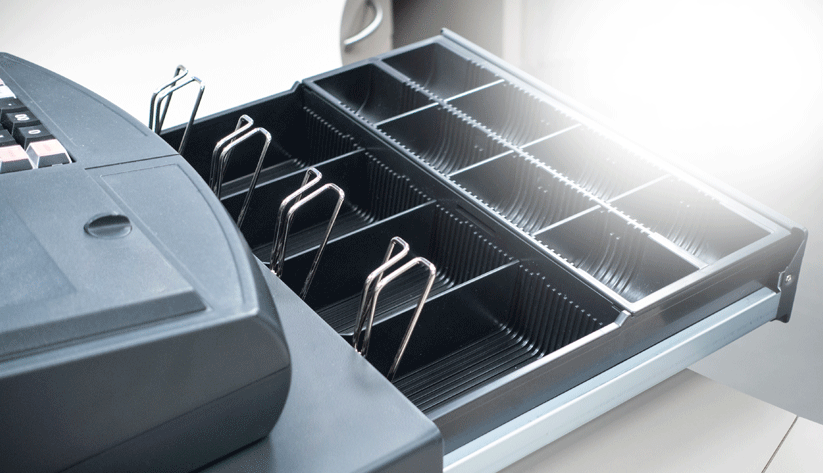
What might a shift to a cashless economy look like? An analysis of consumer payments data by the Atlanta Fed’s Oz Shy finds that a move to cashless transactions would be troublesome for certain consumers, particularly people who do not use or possess credit and debit cards or have bank accounts.
Shy, a senior policy adviser and economist in the Atlanta Fed’s Research Department, attempted to determine the impact on consumers of cashless transactions.
Cash still reigns supreme, with competition
Surveys by the Federal Reserve show that the use of noncash forms of payment continues to rise. Though most retailers still accept cash, an expanding array of businesses are embracing digital payments. For example, two major southeastern sports venues—Atlanta’s Mercedes-Benz Stadium and Tropicana Field in Tampa—recently announced they would no longer accept cash, implementing a payment system that requires credit or debit cards. Some U.S. airlines no longer accept cash for purchases during flights.
In response to some recent moves by retailers to go cashless, some states and cities have recently passed laws to require the acceptance of cash. The city of Philadelphia has banned cashless stores, and New Jersey’s governor this year signed legislation that prohibits merchants from turning down cash payments. Massachusetts has had a law on the books for decades that bars cashless businesses.
Understanding the unbanked
Unease over cashless payments partly reflects concerns that consumers who lack bank accounts are especially vulnerable. A survey by the Federal Deposit Insurance Corporation found that 8.4 million households—6.5 percent of the U.S. total—were unbanked in 2017, and an additional 24.2 million households were underbanked, meaning they had a checking or savings account but also used financial products outside the banking system.
Shy’s research sought to identify consumers who would be affected the most by a shift to cashless stores. He found a correlation between household income and credit card adoption.
The economist analyzed responses from about 2,000 people who took part in the 2017 Diary of Consumer Payment Choice, a study conducted by the Federal Reserve in which participants record their purchase, payment, deposit, and withdrawal activity for three days. The survey yields useful findings about consumers and their use of various payment forms. For example, Shy found that the median household income for participants making in-person purchases who possessed both credit and debit cards came to $67,500, nearly three times higher than the $22,500 median income for households that didn’t have any credit or debit card. The weighted averages were $97,819 and $49,268, respectively.
Perhaps not surprisingly, the research found that survey participants who didn’t possess cards used cash more than those who carried credit and debit cards. The analysis found that survey participants who didn’t have credit or debit cards made 86.4 percent of their payments in cash, and they used prepaid cards for 12.2 percent of their payments. By contrast, respondents who carry both credit and debit cards made 32.6 percent of their payments with cash. The study also showed that people who owned no cards made fewer overall payment transactions than respondents who carry credit and debit cards.
Consumers still go green
Though cash’s share of total payments has declined in recent years, the greenback is still a frequently used payment method. The Fed’s 2018 report on the Diary of Consumer Payment Choice found that cash accounted for 30 percent of all transactions, followed by debit payments at 27 percent, and credit at 21 percent. In 2012, the first year of the diary survey, cash accounted for 40 percent of payments. Cash dominated smaller payment amounts. Shy’s survey data showed that consumers making purchases of $5 or less used cash 70 percent of the time.
Shy’s analysis concluded that cashless stores would be likelier to disadvantage lower-income people and those who do not use banks. Although consumers who already use noncash options such as credit and debit cards might find it easier to move to cashless payments, the research paper states, those who don’t have credit or debit cards would be forced to buy prepaid cards unless other noncash payment forms become available. As the paper puts it, “a complete transition to cashless stores imposes a measurable burden on consumers who do not have credit or debit cards.”
Part of that burden comes from costs associated with prepaid cards, Shy’s paper adds. Costs for these cards vary significantly. Fees charged by providers of reloadable prepaid cards can run as high as $10 a month, and some pay-as-you-go plans specify per-transaction fees that could reach $2, the research paper notes.
These considerations are significant because data show that consumers who are unbanked and underbanked typically pay substantial amounts to access financial services. A 2014 report from the U.S. Postal Service inspector general notes that the average underserved household earns $25,500 annually and spends just over $2,400—or nearly 10 percent of its income—on alternative financial service fees and interest. “That is about the same portion of income that the average American household spends on food in one year,” the report states.




